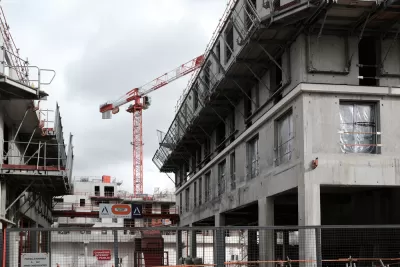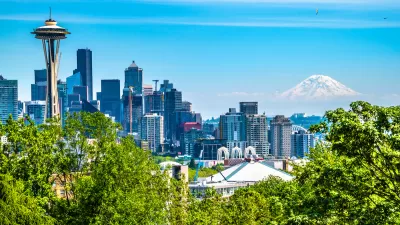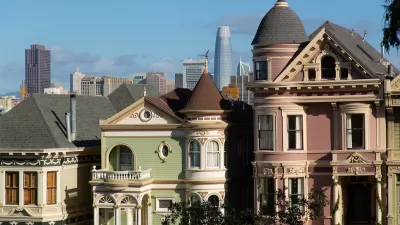France passed a law that required cities to have a certain percentage of social housing. Since then the country's most exclusionary cities and suburbs have seen a fivefold increase in the availability of social housing.

In December 2000, France adopted an ambitious new law meant to address the patterns of economic segregation that had left affordable housing concentrated heavily in lower-income, outlying suburban communities. Solidarité et Renouvellement Urbain, or Urban Solidarity and Renewal (SRU), mandated that French municipalities ensure that at least 20 percent of their total housing stock be “social housing,” subsidized affordable housing restricted to lower-income residents.
After more than a decade of weak compliance by cities, France revised the law in 2013 to increase the requirement to 25 percent social housing and increase the financial penalties for failing to comply. The amended law also included a threat: If communities didn’t start constructing social housing or converting existing buildings to social housing, the federal government would use eminent domain to do it for them.
More than two decades after the law’s passage, new research from the Lincoln Institute of Land Policy attempts to determine whether SRU has been effective in its aim to get every French city to do its fair share when it comes to providing affordable housing and how such a law could work in the U.S. Though many French cities have yet to meet the 25 percent social housing threshold, author Yonah Freemark, an Urban Institute senior research associate, says the law has been a success. For example, he found that France’s most exclusionary cities and suburbs have seen a fivefold increase in the availability of social housing since the law was passed. In the Paris metro region, the number of municipalities with less than 7 percent social housing was reduced from 86 cities to 45 as they increased their social housing stock.
Shelterforce spoke with Freemark to learn more about SRU, its efficacy and shortcomings, and the lessons the law holds for the United States and its own attempts and failings to address the concentration of poverty and expand affordable housing opportunities in exclusionary communities.
Josh Cohen: What is the SRU law trying to accomplish?
Yonah Freemark: The general goal of the SRU law as passed in 2000 was to combat the systemic problems of segregation and inequality that occur across French metropolitan regions. The idea was that by requiring a certain level of affordable housing in every community then the problems related to discrimination and segregation would be reduced. As initially passed in 2000, the law had some ambitious goals, but ...
FULL STORY: Could France’s Approach to Combating NIMBYism Work in the United States?

Study: Maui’s Plan to Convert Vacation Rentals to Long-Term Housing Could Cause Nearly $1 Billion Economic Loss
The plan would reduce visitor accommodation by 25,% resulting in 1,900 jobs lost.

North Texas Transit Leaders Tout Benefits of TOD for Growing Region
At a summit focused on transit-oriented development, policymakers discussed how North Texas’ expanded light rail system can serve as a tool for economic growth.

Why Should We Subsidize Public Transportation?
Many public transit agencies face financial stress due to rising costs, declining fare revenue, and declining subsidies. Transit advocates must provide a strong business case for increasing public transit funding.

How Community Science Connects People, Parks, and Biodiversity
Community science engages people of all backgrounds in documenting local biodiversity, strengthening connections to nature, and contributing to global efforts like the City Nature Challenge to build a more inclusive and resilient future.

Alabama: Trump Terminates Settlements for Black Communities Harmed By Raw Sewage
Trump deemed the landmark civil rights agreement “illegal DEI and environmental justice policy.”

Dear Tesla Driver: “It’s not You, It’s Him.”
Amidst a booming bumper sticker industry, one writer offers solace to those asking, “Does this car make me look fascist?”
Urban Design for Planners 1: Software Tools
This six-course series explores essential urban design concepts using open source software and equips planners with the tools they need to participate fully in the urban design process.
Planning for Universal Design
Learn the tools for implementing Universal Design in planning regulations.
City of Santa Clarita
Ascent Environmental
Institute for Housing and Urban Development Studies (IHS)
City of Grandview
Harvard GSD Executive Education
Toledo-Lucas County Plan Commissions
Salt Lake City
NYU Wagner Graduate School of Public Service





























